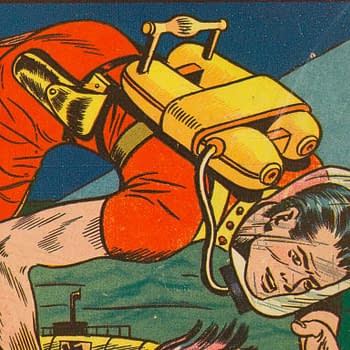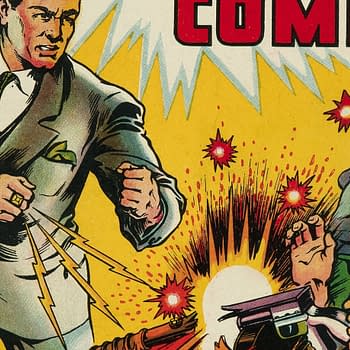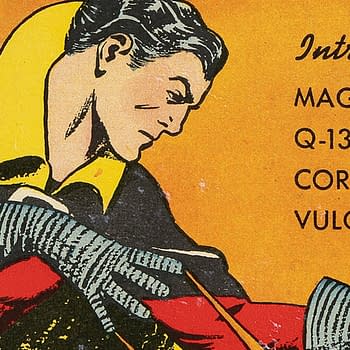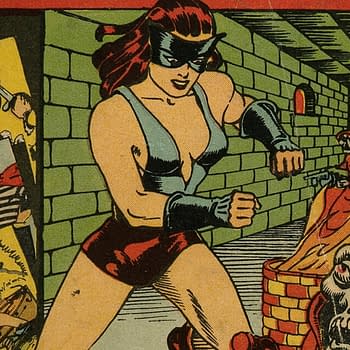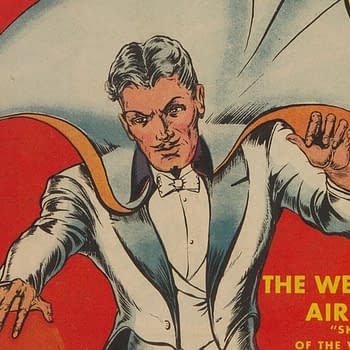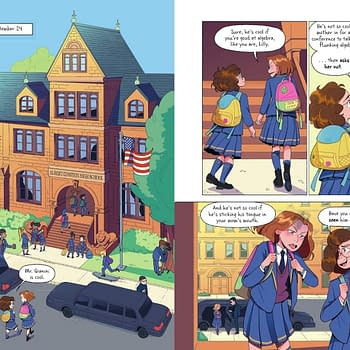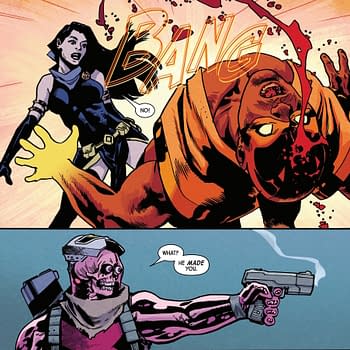Posted in: BC Network, Comics, Conventions, Events, Recent Updates | Tagged: fandom, fanzines, philcon, science fiction
The Secret Seven: Fans at the First Modern Science Fiction Con Had the Right Stuff
On October 22, 1936 a small group of science fiction fans travelled to a house in Philadelphia to meet. There were only about 9 of them or so, with perhaps one or two more ducking in and out during the course of the event. One of their number, Donald A. Wollheim, suggested that their gathering be designated as "The first Science Fiction Convention", and that's how many among fandom's historians have thought of it ever since.
There'd been organized fan conventions in the late 1800s, including Norman Munro's 1889 "national convention" which included Edward S. Ellis — the man who invented Steampunk with Steam Man of the Prairies — as featured guest, but even so, this 1936 Philcon gathering was a remarkable starting point in a number of ways, and the con is still going strong to this day.
Having declared their meeting the first SF con, this bold little group then went a step further. They essentially started plotting out the future of fandom. And rather remarkably… it worked. In the words of attendee Robert A. Madle, who just celebrated his 99th birthday earlier this year (and is still a fan! Respect to you, Mr. Madle!):
It was further decided that this would be just the beginning. The World's Fair was going to be held in NYC in 1939 and it was agreed that a "World" convention wou1d be held in conjunction with it. Of course, the World's Fair wouldn't know anything about it. Then, at the instigation of Wollheim, the group went one step further. In order to start the World Convention machinery moving, a small conference would be scheduled for NYC in February 1937. (This 1937 Conference was held in Long Island City and attracted a "throng" of about 30 attendees.) Late in the afternoon, the NYC group wended its way back to the train station, and the Philly group sat around and talked of the wonders of the day, never realizing what they had wrought and how important in the history of science fiction this day would become.
The fan events between this 1936 gathering and the seminal 1939 World Science Fiction Convention proved to be pivotal to science fiction, comic books, and pop culture at large. Those key moments have echoed through the decades and up to the present day in countless ways.
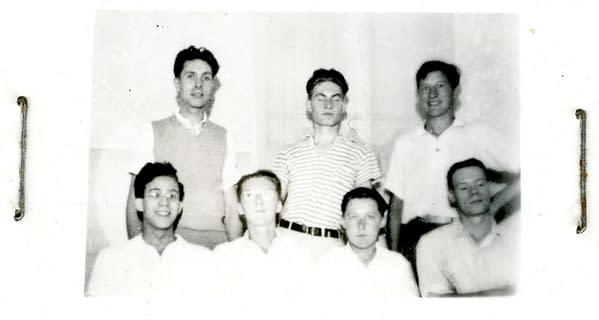
Regular BC readers will know that I'm pretty serious about collecting and researching old paper. This tiny photo is stapled into a fanzine called Speer's Sustaining Program Summer 1940, whose author Jack Speer noted that he'd been promising to publish this photo of "the epochal First Pan-National SF Convention" in Philadelphia for awhile, and goes on to list the names of the seven people in this photo, further noting that they'd all aged a bit since then.
Speer's Sustaining Program is the single strangest fanzine that I own, which is saying something. It came from Jerry Bails' fanzine collection, which contained a number of wonderfully rare oddities. More on that another time. [and if you have deep knowledge of that era of fandom, or if you knew Jack Speer, please do reach out… this particular zine is quite a little mystery]
Helping to kickstart modern fandom and pop culture is far from the only achievement of these fans who met in Philadelphia in 1936. Two of the fans in attendance but not in the photo here, Frederik Pohl and Donald A. Wollheim became successful and popular authors in the field. But as I was researching Speer's Sustaining Program, I discovered that the little group of fans in this photo… were downright amazing.
Back Row, Left to Right:
Thomas Whiteside: Journalist. His 1970 series in the New Yorker on Agent Orange blew the lid off of that matter and led directly to Senate hearings. During WW2, he was part of Office of War Propaganda efforts monitoring Axis propaganda.
Dick Wilson: Writer and journalist. Wilson had a career in pulps like Astonishing Stories. During the war he was a member of the Army Signal Corps. He later became director of the News Bureau at Syracuse. During his career, he was also Chief of Bureau, Transradio News Service (which appears to be something akin to the first radio syndicate. Took off light lightning but faded as competition caught up). Wilson also became Deputy Editor for North America, Reuters.
John Baltadonis: Published his first sf fanzine at age 15. Longtime fanzine publisher.
Front Row, Left to Right:
Milton Rothman: One of the nation's top nuclear scientists. Worked on Project Matterhorn, which was the development of the H-Bomb. Wrote science fiction in his spare time under the name Lee Gregor.
Rob Madle: Key fandom founder. Longtime fanzine publisher. Hugo finalist.
Jack Agnew: A member of the army unit immortalized as the Dirty Dozen. Participated in a reunion of surviving members of the "Filthy Thirteen" (the actual unit nickname that inspired the Dirty Dozen novel and film) and Easy Company, which became part of the HBO series Band of Brothers.
Charles H. Bert: The author of the fanzine who identified the people in this photo, Jack Speer, was unsure about this one. And as it happens, "CH Bert" seems to be a bit of a mystery man overall. I can tell you that he served in the Army during WWII, and that he was a regular letter writer to Weird Tales. In a 1935 letter responding to a Weird Tales reprinting of HP Lovecraft's The Outsider, Bert claims with confidence that the tale is based on the obscure saga of mysterious early 1800s German figure Kaspar Hauser. Bert sounds like my kind of fan, making historical connections like that.
I was particularly interested to see the path in life taken by many of this little group of first-generation science fiction fans, because another fan who was there that day but is not in this photo has loomed large in the history of fandom in this era — John B. Michel.
Michel is of course the key figure behind a legendarily divisive attempt to politicize fandom in the late 1930s and early 1940s. "Michelism" became a term for what is invariably described as a form of Communism, which was ultimately promoted by a group who called themselves the Futurians.
All these decades later, that has always seemed such a jarring leap for fandom in its infancy. Consider: the next October in Philadelphia, in front of a larger group by that time, future nuclear physicist Milton A. Rothman opened the show with some comments. After some organizational proceedings, Julius Schwartz, not yet a DC Comics editor but already a well-connected agent in the field, was introduced and jolted an audience eager for more material by announcing an upcoming addition to Ned Pines' Thrilling Publications line.
And then, David A. Wollheim, speaking on Michel's behalf, gave the audience a different kind of jolt by suggestion that science fiction fans ought to embrace… well, he didn't say Communism, but most in the crowd got the message. The matter became enormously divisive for years, and its echoes could be felt for decades.
But in the context of the moment — not just the political context, but more the cultural context — here's what was happening: these "first fans" were working out what it meant to be fans, and to some, that meant more than just hanging out and discussing the latest issue of Amazing Stories. Of course, most fans rejected Michel's notions. But there was an idea among many fans at the time that organized fandom should be a springboard to much more.
Some wanted to take the next steps, to make the science and ideals in their science fiction stories real, and to advance both technology and society. It's pretty clear that many among the small group who got together in Philadelphia in 1936 believed in that.





